April 2024 – National Taskforce Meeting & Collaborative Kickoff Convening
Historic federal investments in infrastructure spell major economic opportunity for cities and states across the nation. One of the most promising avenues for job creation is the expansion of electric vehicle (EV) charging infrastructure, which presents a once-in-a-generation opportunity to bring transformative economic growth to underserved communities.
Through the Infrastructure Investment and Jobs Act’s (IIJA) National Electric Vehicle Infrastructure Program (NEVI), states can access significant federal funding and resources to work toward ambitious EV adoption targets. Building out charging infrastructure is driving demand for skilled workers to fill well-paying jobs in assembly, installation, and maintenance of charging systems.
To help cities and states achieve the full promise of investments in EV charging, the National Governors Association (NGA) and the National League of Cities (NLC) partnered to launch the State and Local Collaborative to Support an Inclusive Workforce for the Electric Vehicle Charging Sector (EV Workforce Collaborative) led by a taskforce of leaders spanning the EV adoption continuum.
The Collaborative’s work kicked off with a convening in Washington, D.C., that brought together government, industry, postsecondary, and workforce leaders to discuss workforce strategies necessary to develop a skilled and ready talent pipeline to build America’s next-generation infrastructure.
During two days of workshops and panel discussions, Collaborative members engaged in in-depth dialogue on a range of EV workforce issues. Below is a summary of each of those panel sessions.
Building America’s Future Electric Mobility Workforce
Taskforce co-chairs Justine Johnson (Chief Mobility Officer for the State of Michigan) and Stephanie Piko (Mayor of Centennial, Colorado) opened the event with an overview of taskforce priorities – outlining the opportunities and challenges ahead in creating career pathways in the growing EV industry for underserved and marginalized communities. Also participating in the panel were Gabe Klein, Executive Director of the U.S. Energy and Transportation departments’ Joint Office of Energy and Transportation; Molly Bashay, Senior Policy Advisor for the U.S. Labor Department’s Employment and Training Administration; and Paige Shevlin, Strategic Advisor for Infrastructure Workforce Development in the U.S. Transportation Department. These federal representatives highlighted the national EV landscape and priorities, updated participants on the ongoing roll-out of IIJA/NEVI guidelines and resources, identified pain points, and briefed participants on funding opportunities available for states and local governments to work together to improve our nation’s EV charging network.
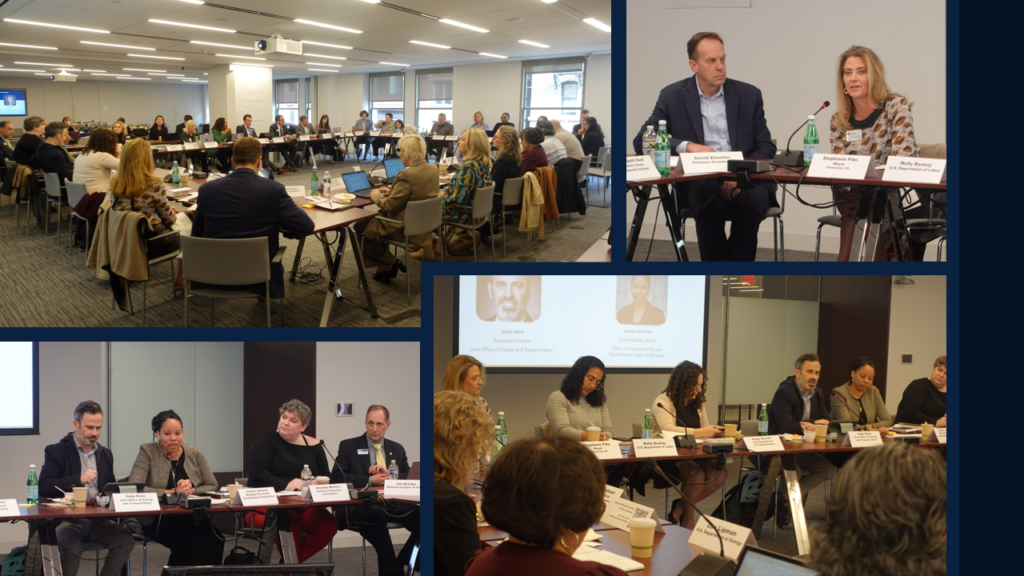
Understanding EV Workforce Opportunities
Abigail Campbell Singer, Head of Climate & Infrastructure Policy for Siemens USA, shared an overview of Siemens’ work to support an inclusive EV workforce. Through its EVeryone Charging Forward initiative, Siemens is partnering with NGA and NLC to build a central hub of best practices in developing accessible EV career pathways. Electrification is one of Siemens’ core pillars, and the company is working closely with state taskforces as they develop their NEVI plans. Kianna Scott, Senior Vice President of Learning and Development at ChargerHelp!, detailed her organization’s technology-first approach to ensuring the reliability of EV charging infrastructure. ChargerHelp! has worked with state and federal governments to include reliability funding in infrastructure funding policy – ensuring operations and maintenance is specifically budgeted in charging station funding programs. As these priorities generate emerging workforce needs, Scott’s organization develops curriculum aligned with the Electric Vehicle Supply Equipment (EVSE) Body of Knowledge under SAE International – ensuring participants emerge from training programs as trained and certified EVSE technicians. Jeanette Shaw, Policy Director at Forth, outlined her organization’s work to expand equitable access to electric transportation. Noting that transportation is the second most costly household expense, and that shorter commute times are the strongest predictors of upward mobility, Shaw summarized Forth’s efforts to launch pilot programs in historically disadvantaged communities to provide access to electric cars and car-sharing services, as well as Forth’s work to expand access to EV upskilling and infrastructure training. Matt Stephens-Rich, Director of Technical Services for Electrification Coalition, shared the Coalition’s perspective on the national EV workforce development landscape. Stephens-Rich identified a wide variety of partners with a role to play in supporting EV workforce development – including Veterans Affairs agencies and higher education leaders. He explained how partners can leverage current specializations – like electricians, production workers and software engineers – and tap into existing training curriculum options, including apprenticeships, vocational and technical programs, and journeyman and other apprenticeship-style programs.
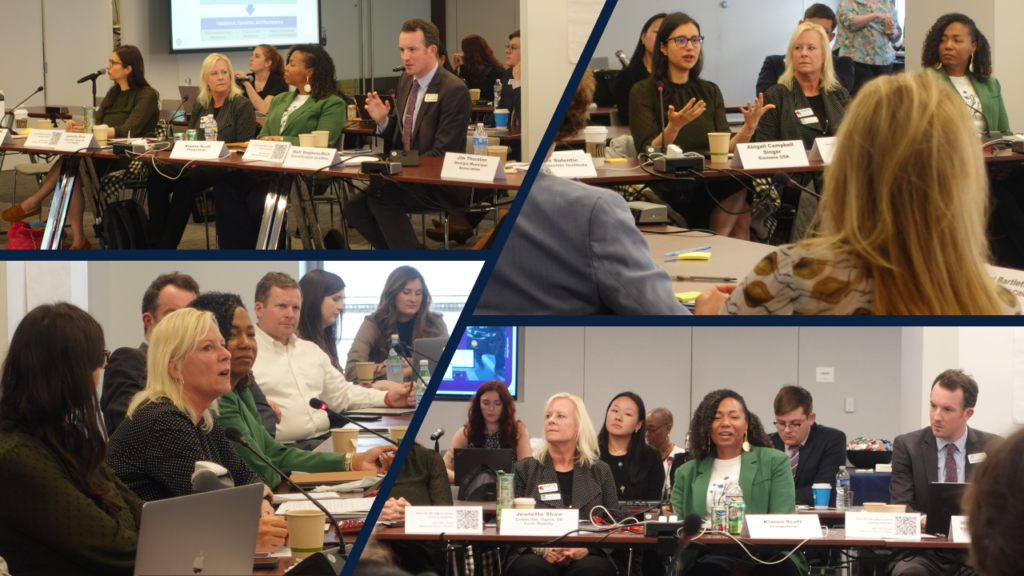
Industry Panel
The next panel, moderated by Missy Henriksen, Center for Energy Workforce Development (CEWD), built on the same themes. Liz Hunt – Principle Project Manager, Electric Power Research Institute – and Houston Smith – Vice President, Governmental Affairs, Alabama Power – presented the industry perspective. Smith highlighted recent legislation approved in Alabama to support EV workforce development. The Alabama community college system is a critical partner, Smith explained, citing community college line worker and HVAC technician programs that provide a helpful model. Alabama Power is also coordinating closely with Historically Black Colleges and Universities (HBCUs) on training development, as well as working with community colleges to establish the Alabama Energy Infrastructure Training Center. Hunt shared an update on EPRI’s EVs2Scale2030. The three-year initiative is a collaboration with more than 500 stakeholders — including Amazon, the U.S. Department of Energy, and leading electric companies — to ready the electric grid in support of the accelerated development of EV charging infrastructure. Hunt previewed a new tool EPRI is developing to guide EV strategy: a 50-state visualization and 2030 roadmap identifying the aggregated and anonymized electric vehicle loads, grid impacts, utility lead times, workforce requirements, and costs associated with EV expansion. The roadmap is one of several resources EPRI is rolling out to help pinpoint and address the challenges and opportunities.
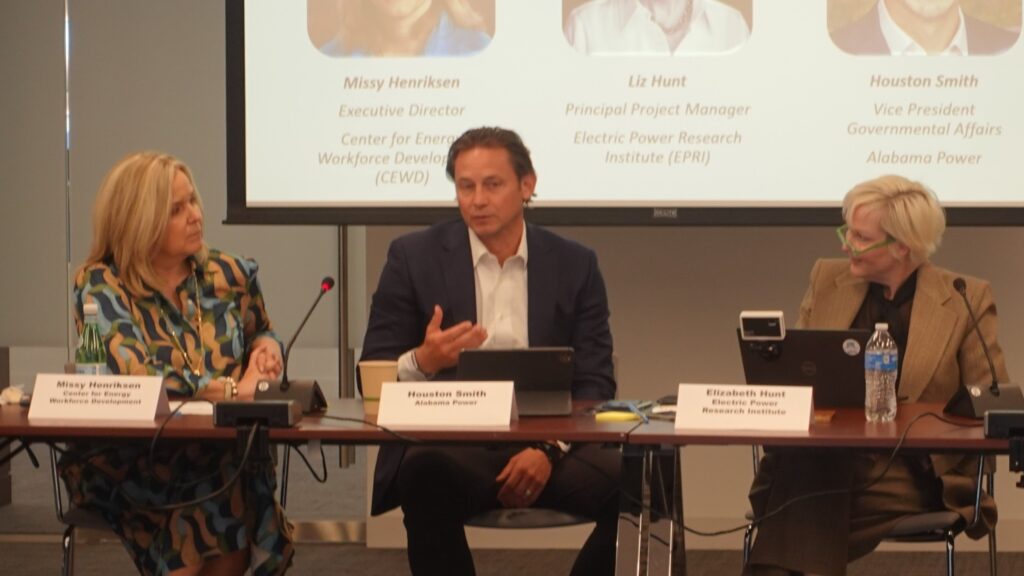
Equitable Approaches to EV Workforce Development
The final day of the event kicked off with a series of TED Talk style discussions focused on equitable approaches to EV workforce development and current and emerging EV workforce research and needs. The first presentation and discussion was led by Melissa Johnson, Managing Director of State Strategies at National Skills Coalition; Reem Rayef, Senior Policy Advisor for the BlueGreen Alliance; and Cheryl Sanford, Director of Workforce Programming at Management and Unions Serving Together (MUST) Careers, a fellow EVeryone Charging Forward partner. Johnson and Rayef shared an overview of projected job opportunities generated by the IIJA, the Inflation Reduction Act (IRA) and the CHIPS and Science Act – noting that the median hourly wage for the 2.9 million anticipated new jobs is estimated to be 10.5% higher than hourly wages elsewhere in the U.S. workforce. While 69% of these new jobs will not require a four-year college degree, these sectors could see a labor shortage of over 1 million workers – unless the right training and workforce development programs are implemented. Johnson and Rayef also noted the low participation level of women and people of color in these occupations – suggesting ample opportunity for these workers. They next explained the role of manufacturing apprenticeships in achieving a range of priorities, including: ensuring the jobs are desirable and high quality, driving employers to invest in workers’ career development, and preparing both incumbent workers and future workers to build EVs. Raquel Gomez, Special Projects Coordinator, New Mexico Department of Workforce Solutions, shared details of her state’s comprehensive model for EV and clean energy workforce development. One program focuses on connecting young people to career technical education and pre-apprenticeships, while another supports dislocated workers with wrap-around services, career case management, and stipends they can apply toward skills enhancement through customized training. Wrapping up the first series of presentations was Cheryl Sanford, who shared the hallmarks of MUST’s electric fast track pre-apprenticeship program. She also emphasized some of the unique differences between cities and states and considerations that must be made at each level, sparking audience engagement around how we incentivize small-medium size municipalities and the role that Governor’s spouses play in the transition to EVs.
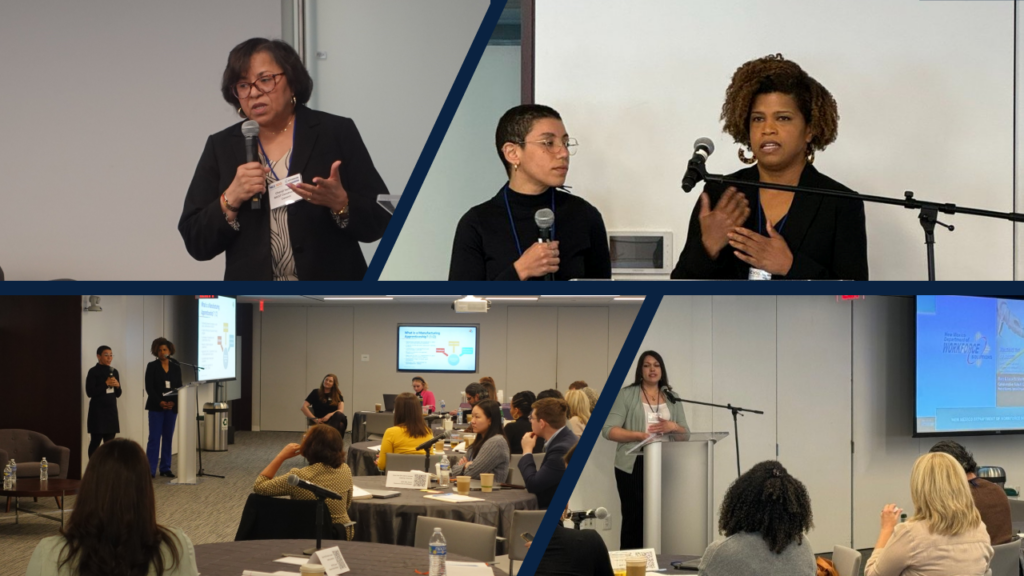
Defining and Addressing U.S. Workforce Needs in the EV Transition
Next, Devashree Saha Director, US Clean Energy Economy Program, World Resources Institute, and Phil Jordan, Vice President, BW Research Partnership, shared updates from their organizations’ research partnership on strengthening the EV talent pipeline. Launched in January 2024, the project aims to provide a more granular understanding of how the U.S. EV transition is expected to alter specific occupations and associated skills, and to assess how such impacts will translate to different opportunities and challenges for the workforce. The researchers will conduct one-on-one interviews with industry experts, trade associations, and employers to develop findings that will be released in 2025. The findings will be compiled in a roadmap for occupational recruitment and skilling needs, and the organizations will also share an implementation playbook to help state officials, EV industry employers, union representatives, educational institutions, and other community partners ensure workers advance right alongside vehicle advances. Ashley Blackwell, Deputy Director, Electrification Coalition, explored the roles a range of stakeholders – including businesses, mayors, Governors, and education leaders – can play in building the EV workforce. Focusing on Georgia, Blackwell highlighted several training programs in the state, such as a certificate and credit program for an EV Charger Technician Program launched by Gwinnett Technical College and a 4-week EVSE Technician Program created by Goodwill of North Georgia. Blackwell invited the Collaborative to consider existing state or municipality assets that can be leveraged to support EVSE workforce, like existing partnerships, models, plans, expertise, data, and funding.
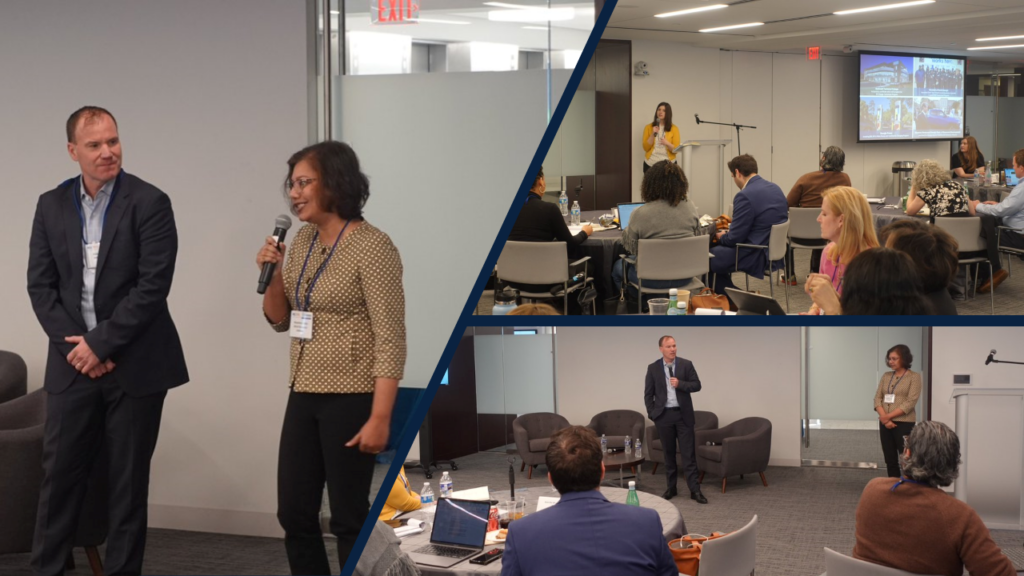
State and Local Leadership
Closing out the meeting, Taskforce Co-Chair Justine Johnson moderated a discussion with Caroline Sullivan, Executive Director, North Carolina Business Committee for Education; Naheed Huq, Manager of Economic and Community Vitality at the Southeast Michigan Council of Governments (SEMCOG) and Jim Thorton, Director of Government Relations, Georgia Municipal Association. They discussed how to message the EV transition to rural communities – reinforcing the need for our rural communities to have the best practices to know how to recruit, train, hire and build the EV workforce. They also indicated some of the differences between states and localities and the considerations that each must make for better EV transition uptake by the respective communities. Making sure EV jobs are desirable, high-quality, union jobs and that apprenticeship programs are pathways to these jobs, was an agreed upon priority.
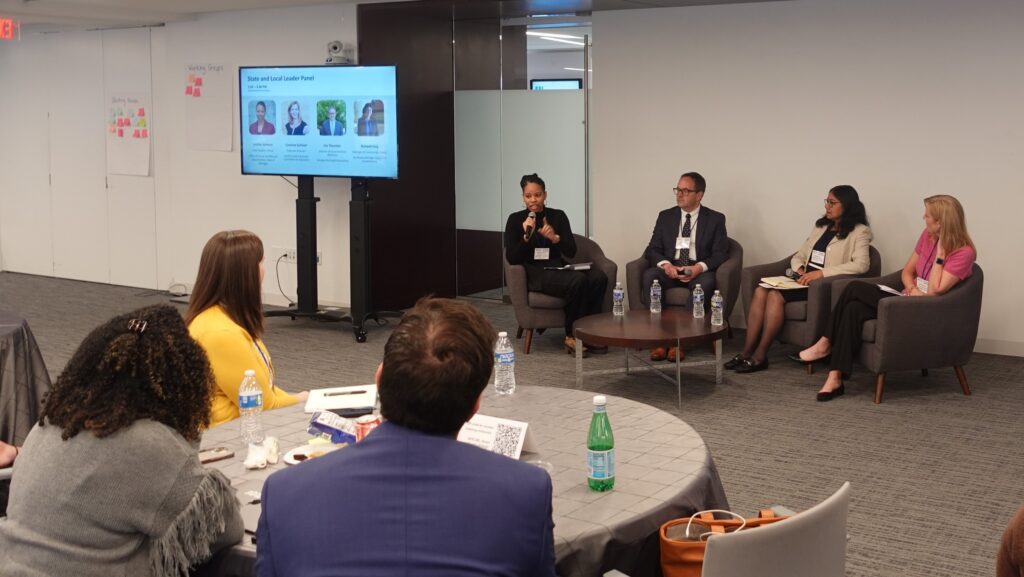
Takeaways
Innovation was a common theme among the two days of discussions. Collaborative members agreed that the energy transition to widespread adoption of EVs is well underway, but fully achieving its promise also requires a “people transition” in the form of innovative approaches to skills training, including reskilling and upskilling. As one panelist put it, it’s about “supplementing, not supplanting.” Collaboration is another key element to EV adoption. To ensure underserved communities realize the full benefits of EV investments, Governors and local leaders must cover all the bases: advocating for K-12 STEM and STEAM education, coordinating with postsecondary entities and working with the private sector to design and expand access to effective apprenticeship and training programs, and collaborating with unions, safety officials, environmental justice organizations, and more. Over the next year, NGA, NLC, and the EV Workforce Taskforce will develop and share resources that respond to the conversations and requests that came out of the convening. The Collaborative will also assemble working groups that will focus on filling some of the data and action gaps elevated by the convening conversations. Similar to the Taskforce, the working groups will bring together a wide range of stakeholder groups. By bringing representatives of all these stakeholder groups to the table, the EV Workforce Collaborative, and its National Electric Vehicle Workforce Taskforce, is designed to facilitate the innovation and collaboration needed to meet this once-in-a-generation moment.












